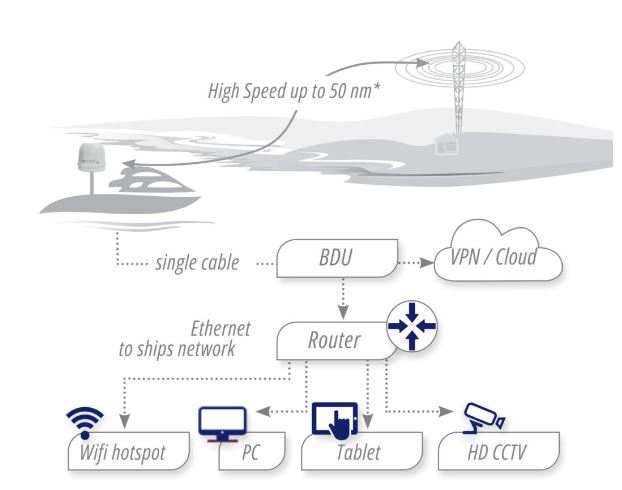
The Evolution of Maritime Communication: From Morse Code to LTE
Maritime communication has evolved dramatically over time. Starting with flag signals and Morse code in the 19th century, ships could transmit messages across vast distances. The introduction of radio telephony in the early 20th century enhanced these capabilities.
The 1960s brought satellite communication, enabling global voice and data connections, though with limited bandwidth and high costs. As we entered the 21st century, the maritime industry embraced internet and mobile technologies, leading to the adoption of LTE technology.
Understanding LTE Broadband Antennas: A Game-Changer for Sea Connectivity
LTE broadband antennas revolutionized maritime communication by enabling high-speed internet access at sea. These devices connect ships to cellular networks, offering a cost-effective alternative to satellite systems.
Maritime LTE antennas feature robust, compact, and lightweight construction to withstand extreme weather conditions, including high winds and salt spray. Their omnidirectional capability enables signal reception from multiple directions, with smart switching technology for optimal connectivity.
Key features include:
- Weather-resistant IP66+ rated enclosures
- Wide frequency range (600 MHz to 3.7 GHz)
- High gain (5-12 dBi)
- Low power consumption
- Easy installation
- Integrated GPS
- Multi-router compatibility
The Impact of High-Speed Internet on Maritime Operations
High-speed internet via LTE antennas has transformed maritime operations. It enables real-time data transmission for better route planning and maintenance, enhances safety through improved emergency communication and telemedicine services, and facilitates environmental monitoring and compliance.
Operational Efficiency | Real-time data transmission, improved route planning, predictive maintenance | Safety | Enhanced emergency communication, telemedicine services | Environmental Compliance | Real-time monitoring of emissions and fuel consumption | Business Operations | Improved communication with onshore teams, remote troubleshooting |
As LTE technology advances, its maritime impact continues to grow.
Breaking Down the Numbers: Current and Future LTE Speeds at Sea
LTE broadband antennas provide significant data transfer rates at sea, with current download speeds of 150 Mbit/s and upload speeds of 50 Mbit/s. These speeds support video conferencing, file transfers, and streaming services, though actual performance varies with conditions.
Future LTE systems could achieve upload speeds of 500 Mbit/s and download speeds of 1200 Mbit/s, enabling:
- Enhanced real-time monitoring
- Advanced remote operations
- 4K streaming and VR experiences
- Seamless cloud integration
| Capability | Current LTE | Future LTE |
|---|---|---|
| Download Speed | 150 Mbit/s | 1200 Mbit/s |
| Upload Speed | 50 Mbit/s | 500 Mbit/s |
| 1 GB Download | 53 seconds | 6.6 seconds |
| 500 MB Upload | 80 seconds | 8 seconds |
| HD Streams | 5-7 | 40+ |
While future speeds depend on technological advancements, LTE broadband antennas are revolutionizing maritime communications, bringing land-like connectivity to vessels and enhancing maritime operations significantly.

